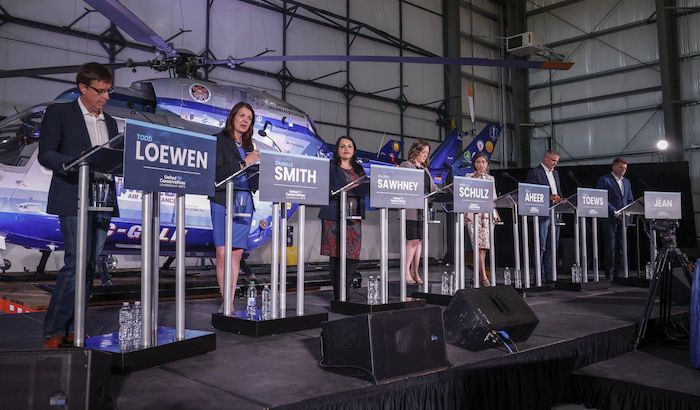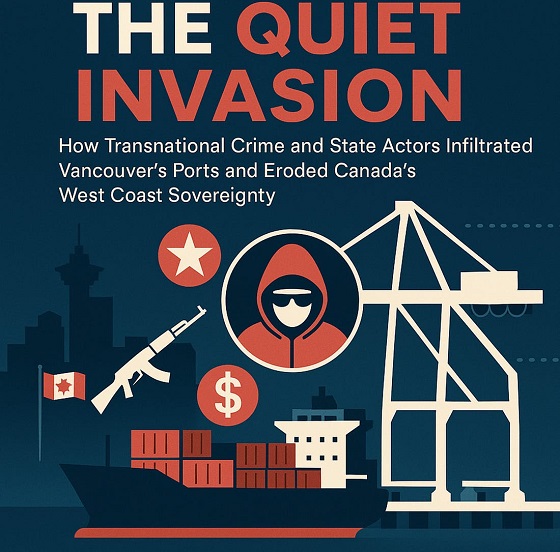Alberta
Project Confederation group urging UCP Leadership hopefuls to consider Alberta first

Article submitted by Josh Andrus of Project Confederation
The current Alberta government has certainly talked the talk about standing up to the federal government much better than previous administrations.
Actions speak louder than words, though, and action has been sorely lacking.
It has been more than nine months since Albertans strongly voiced their opinion in favour of abolishing equalization from the Constitution.
In the aftermath, the muted response from the federal government speaks volumes – when we called, nobody answered.
It has, therefore, become glaringly obvious that the equalization referendum was not enough to convince Ottawa to come to the table and initiate constitutional talks.
It’s also important to make sure we keep focused not just on any one particular problem, but on the core issue itself – the jurisdictional fight between the federal government and the provinces.
That’s why we need to effectively communicate to every Albertan three things:
- How the Canadian federation is supposed to work
- How it’s actually being run at the moment
- How to fix the problem and get it back to how it should be
1 How Canada is supposed to work is misunderstood (or misrepresented, perhaps deliberately so) all the time by the media, academics, politicians, and many others.
Canada is designed as a federation, and that word actually means something.
A federation is a union of (at least partially) self-governing states or provinces.
The creation of Canada didn’t merge a bunch of provinces, territories, colonies and countries into a single new entity.
Canadian confederation created a system where there was a clear division of powers between the federal government and the provinces.
Many (especially in Ottawa) think that the federal government sits “above” the provinces, suggesting it is more important, more powerful, and can tell the “lower” level of government what to do.
In fact, the federal government has complete sovereignty over the issues they were given jurisdiction over, while the provincial governments have complete sovereignty over the issues they were given jurisdiction over.
In short, Alberta – and all the other provinces – are supposed to be equal partners in this country, not subservient to continuously hostile federal governments in Ottawa.
2 Unfortunately, over time, the federal government has exerted jurisdiction over things it’s not supposed to control, and because the federal government gets to appoint federal judges, the federal judges have tended, also over time, to let the federal government get away with this.
Historically, this has involved ever-increasing federal control of natural resources and environmental concerns and the current federal government continued this trend, spending the past seven years trampling all over the constitutional jurisdiction of Alberta – through Bill C-69, Bill C-48, the carbon tax, and more.
Worse, they haven’t just completely ignored Alberta’s complaints about this overreach – they’ve actually continued to make things worse.
Since the equalization referendum, the federal government has continued to roll out even more new federal policies that will take over Alberta’s jurisdiction on a wide range of issues – childcare funding, healthcare rules, agriculture and fertilizer constraints, environment regulations, and more.
The current relationship between federal and provincial governments in Canada is not how it is supposed to be, and it isn’t sustainable.
Something has to give.
3 Given this approach by the federal government, it has become abundantly obvious that the equalization referendum was not enough to convince Ottawa to come to the table and negotiate some kind of compromise with Alberta.
Alberta must stand up for itself.
Alberta needs to start saying no to Ottawa, not just asking Ottawa nicely to change their mind.
Alberta must also demand that the Canadian Constitution be re-opened.
If the federal government’s judges are willing to twist the words in the Constitution so much that they become meaningless, then we need to re-write sections of the Constitution to make it crystal clear, in plain language, that the federal government’s current actions will not be tolerated or permitted any longer.
At a minimum, these changes would involve:
- Abolishing equalization
- A fair House of Commons
- An equal Senate
- Unrestricted free trade (including pipelines)
- Complete provincial control over resources
Yes, this would be a big change from the current status quo.
But, let’s be clear, that’s only because things have drifted so far from what they are supposed to be.
Albertans are not actually asking for anything unique or radical.
We are simply asking for the federal government to follow the rules of the Constitution as they are written, not as they’ve been twisted to mean since.
And if the federal government won’t even agree to something as simple as that, well… at least we’ll have our answer then
Regards,
Josh Andrus
Executive Director
Project Confederation
PS: If you’re in a position to contribute financially to our important work fighting for Alberta, you can make a donation here.
Alberta
Alberta Provincial Police – New chief of Independent Agency Police Service

Sat Parhar has been appointed as the first chief of the Independent Agency Police Service, marking the next step toward a new municipal policing option.
The appointment of a new chief for the Independent Agency Police Service (IAPS) marks the next step in giving municipalities a new option for local policing and builds on the work already underway for the agency to assume the police-like duties currently carried out by the Alberta Sheriffs. The IAPS will empower municipalities to adopt strategies that effectively respond to their specific safety concerns, enhancing public safety across the province.
Chief Parhar brings more than 25 years of policing experience, including senior roles with the Calgary Police Service, most recently as deputy chief. His frontline policing experience and deep understanding of Alberta’s complex and diverse public safety landscape positions him to lead the agency as it takes shape and begins its work as a new municipal policing option, keeping communities safe.
Once operational, the agency will strengthen Alberta’s existing policing model and complement the province’s current police services, which includes the RCMP, Indigenous policing services and municipal police. It will help fill gaps and ensure law enforcement resources are deployed efficiently to meet Alberta’s evolving public safety needs and improve law enforcement response times, particularly in rural communities.
“Appointing Chief Sat Parhar is a key milestone in Alberta’s plan to give municipalities a real choice in how their communities are kept safe. This is about building a modern police service that reflects the priorities of Albertans, strengthens local decision-making, and ensures every corner of our province, especially rural areas, can count on responsive, effective law enforcement. With his decades of experience and deep understanding of Alberta’s policing landscape, he is the right leader to bring this vision to life.”
“This appointment signifies a significant step forward in our efforts to establish a more robust, community-focused policing model that is better equipped to meet the unique needs of our local residents. Under Chief Parhar’s visionary leadership, we are confident that we will develop a modern, efficient police service that not only enhances public safety but also aligns closely with the priorities and values of Albertans. His experience and commitment are vital in shaping an IAPS that is responsive, transparent, and dedicated to fostering trust and collaboration within the community, ultimately ensuring a safer and more connected society for all.”
Chief Parhar’s immediate priorities will be to hire an executive team and commence organizational planning such as developing key recruitment, training and other operational policies. Chief Parhar’s appointment is the first step of many to establishing the IAPS.
“It’s an honour to take on this role and help shape a modern police service built for Alberta. My focus from day one will be on setting high standards for professionalism, building strong relationships with our partners and ensuring this service reflects the needs and priorities of the communities we serve.”
The Independent Agency Police Service was formally created through regulation following the passing of Public Safety Statutes Amendment Act, 2024. The agency will operate as an independent Crown corporation, and will be renamed the Alberta Sheriffs Police Service, with its head office located in Calgary. The IAPS will be operationally independent from the provincial government with civilian oversight, consistent with all police services in Alberta.
“When it comes to policing, municipalities like ours deserve a choice – especially when the current system leaves us disadvantaged simply because of our size. We look forward to learning more about what that alternative will look like once an Alberta police agency is fully established and the options are clear. For us, this is about fairness, sustainability, and ensuring municipalities have access to policing solutions that reflect both their needs and their realities.”
Quick facts
- The regulation establishes the IAPS Provincial Corporation and its governance structure including board of directors, board of director powers, financial responsibilities and accountabilities.
Related news
- Expanding municipal police service options (April 7, 2024)
Alberta
Pierre Poilievre – Per Capita, Hardisty, Alberta Is the Most Important Little Town In Canada

From Pierre Poilievre
-

 Business1 day ago
Business1 day agoRFK Jr. says Hep B vaccine is linked to 1,135% higher autism rate
-

 Crime2 days ago
Crime2 days agoNational Health Care Fraud Takedown Results in 324 Defendants Charged in Connection with Over $14.6 Billion in Alleged Fraud
-

 Business13 hours ago
Business13 hours agoWhy it’s time to repeal the oil tanker ban on B.C.’s north coast
-

 Censorship Industrial Complex1 day ago
Censorship Industrial Complex1 day agoGlobal media alliance colluded with foreign nations to crush free speech in America: House report
-

 Alberta8 hours ago
Alberta8 hours agoAlberta Provincial Police – New chief of Independent Agency Police Service
-

 Health2 days ago
Health2 days agoRFK Jr. Unloads Disturbing Vaccine Secrets on Tucker—And Surprises Everyone on Trump
-

 Alberta13 hours ago
Alberta13 hours agoPierre Poilievre – Per Capita, Hardisty, Alberta Is the Most Important Little Town In Canada
-

 Business1 day ago
Business1 day agoElon Musk slams Trump’s ‘Big Beautiful Bill,’ calls for new political party

